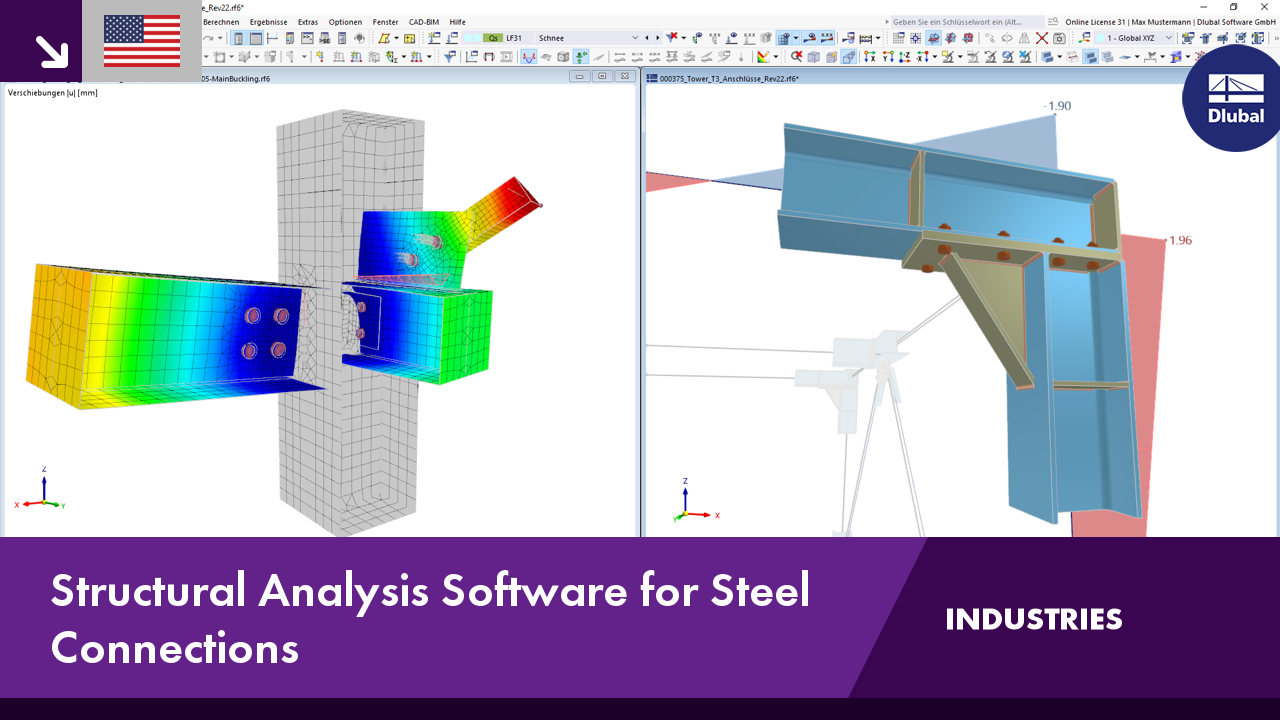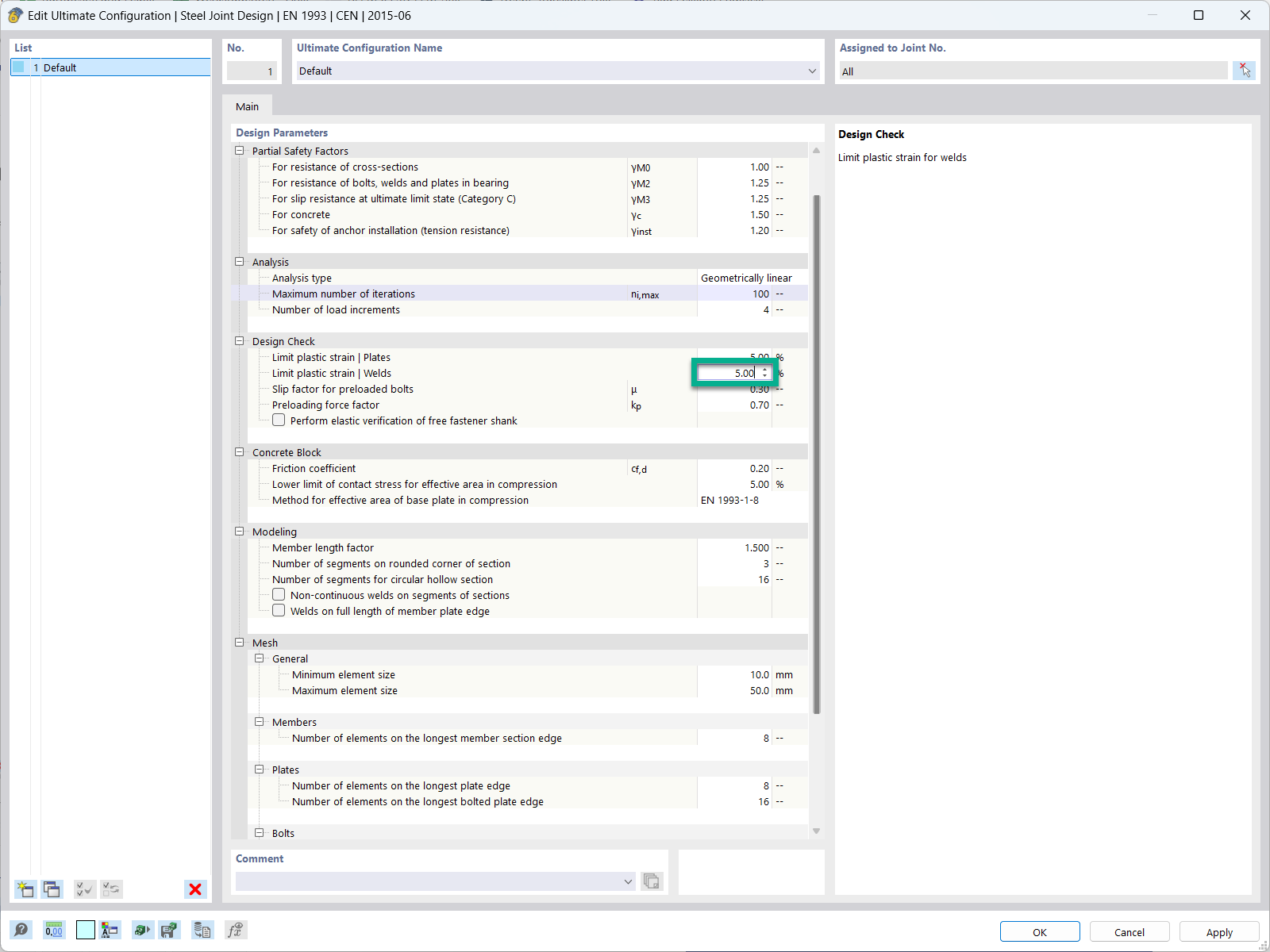First of all, it is important to take into consideration whether it is necessary to consider nonlinearities at all, or whether a linearization is sufficient. The response spectrum analysis represents a method that reduces seismic actions to the minimum necessary in order to perform the structural design with minimum effort. Therefore, the linearization and thus the simplification of the structure should always be the first choice in such a design.
The following example is a frame structure including tension members. If these members are available in the structural system, they are linearized in the dynamic add-ons, which are the Modal Analysis and the Response Spectrum Analysis, and interpreted as truss members that can absorb compression and tension forces equally. The present structure is used to analyze the differences in results when tension members are linearized or considered. This article also explains how to consider the tension members approximately.
Approximate Consideration of Tension Members in Determination of Natural Vibrations and for Response Spectrum Analysis
One possibility is to determine the natural vibrations on a system in which some tension members have already failed (defined initial state). It is necessary to select a pre-deformation in one direction. There are two ways to create this predefined initial state. On one hand, the corresponding tension members can be deactivated manually to simulate a failure. On the other hand, it is possible to define a very small horizontal force in a load case, leading to the failure of the relevant tension members.
In this example of a two-dimensional frame, a pre-deformation in the positive X-direction is assumed. Members 5, 8, and 11 are deactivated. This structure modification is then activated in the "Modal Analysis" load case. Three eigenmodes are calculated in the X-direction. Looking at the results, which are discussed in more detail below in this article, you can see that the deactivated members no longer deform.
The defined modal analysis case is now assigned to the response spectrum analysis. A new load case is created for which the default settings are kept. A response spectrum according to the standard is assigned in the X-direction. No further settings are required. To compare the results, the modal analysis and the response spectrum analysis are performed again without deactivating the tension members.
Evaluation and Comparison of Results
The structure's natural vibrations differ in the value of the natural frequency, but the direction and the mode are similar. By deactivating the tension members, the structure becomes significantly softer and the frequencies are smaller due to the lower stiffness. In both analyzed cases, the first eigenmode is dominant (the effective equivalent mass factor is approximately 80%).
The results of the response spectrum analysis differ significantly. If you compare the axial forces in the tension members, it becomes clear that they increase strongly when the tension members are considered. It results from the failure of the members subjected to compression, which may be involved in the first analyzed case and contribute to the stabilization. A linearization problem becomes visible as well: Even in the case of deactivated tension members, the axial forces in the positive and the negative directions develop identically, thus compressive forces also arise. This can be explained by the square superposition.
However, the base shear force is greater if the nonlinearities are neglected, and is thus on the safe side. For evaluation, you can use either a result member or the "Building Model" add-on.
Thus, if you only want to analyze the base shear force (for example, for comparison with other horizontal actions), neglecting the tension members would be on the safe side. However, they should be considered for the actual design of tension members in case of earthquakes. If you analyzed an asymmetrical structure, you would have to analyze the pre-deformation in the positive and negative directions.















.png?mw=350&hash=c6c25b135ffd26af9cd48d77813d2ba5853f936c)
















.png?mw=512&hash=4a84cbc5b1eacf1afb4217e8e43c5cb50ed8d827)

















_1.jpg?mw=350&hash=ab2086621f4e50c8c8fb8f3c211a22bc246e0552)




-querkraft-hertha-hurnaus.jpg?mw=350&hash=3306957537863c7a7dc17160e2ced5806b35a7fb)


.png?mw=600&hash=49b6a289915d28aa461360f7308b092631b1446e)















